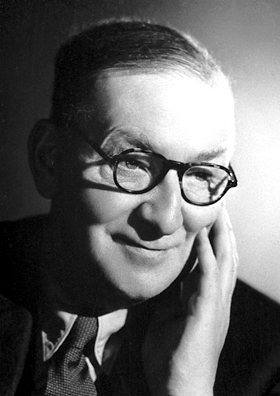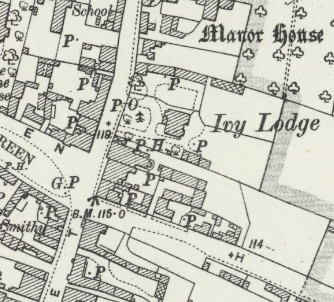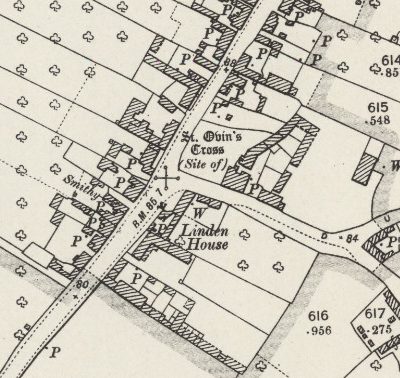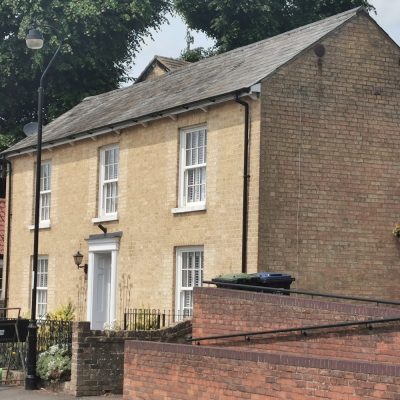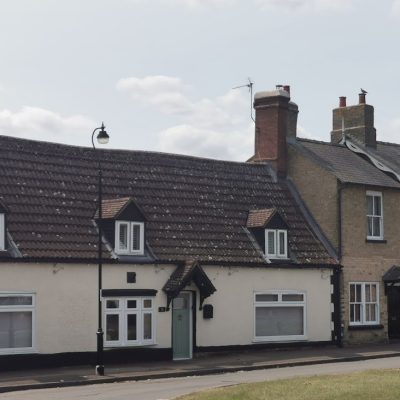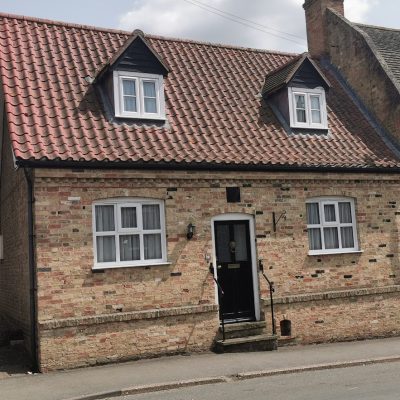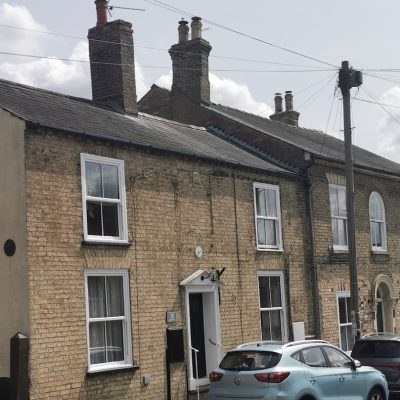Search by topic
- archaeology
- Building of Local Interest
- chapel
- charity
- church
- crime
- dressmaker
- fire
- Great Eastern Railway
- Listed building
- Mapping Relief
- medieval
- oral history
- poverty
- Public House
- Religious House
- Roman
- scholar
- school
- Then and Now
- tudor
- women
- work
- world war one
- world war two
Search by text
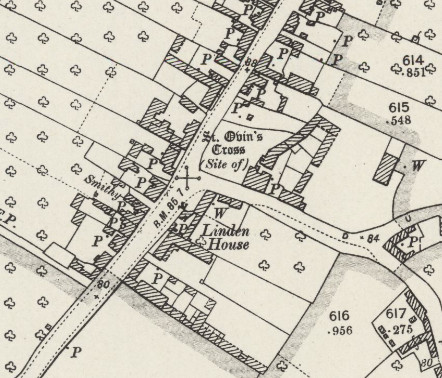 Haddenham OS 1901
Haddenham OS 1901Stone Cross, Haddenham
History of Stone Cross
Lorna Delanoy in Wossis Name? (2020) describes the origin of ‘Stone Cross.:
My grandfather lived at Stone Cross Farm at the south end of the high Street … We are told by William Cole the antiquarian that Canon Bentham … found a stone dedicated to Etheldreda’s steward Ovin (died 675 AD, see Norman Sneesby’s book, Ethedreda) with a Latin inscription “Lucem Tuam Ovino Da Deus Et Requiet Amen” – “Grant O God to Ovin they light and rest”. It was being used as a horse-mounting block at the east end of the parish Church … realising its significance as a memorial cross he arranged for it to be taken to Ely Cathedral ‘for safe-keeping.’
Lorna Delanoy goes on in her article to discuss other stones and inscriptions found in the vicinity.
1921 Stone Cross
William Freeman, b 1873, farmer, b Wardy Hill
Harriett Lydia, b 1873, b Wilburton
Arthur, b 1902, assisting in farm work, b Haddenham
Mabel, b 1908, b Haddenham
George William, b 1911, b Haddenham
Mary Freeman, visitor, widow, b 1848, b Little Downham
In 1911 the Freeman family were living at West End, Haddenham.
Walter Barnard, b 1870, farmer, b Norfolk
Ruby, b 1887, b Surrey
William, b 1903, farm labourer, b Middlesex
Clarence, b 1910, b Kent
1939 (Aldreth Road)
William Freeman, b 1873, smallholder
Harriet L Freeman, b 1873
Mabel Freeman, b 1908
Ivor Clements, b 1928
Lorna Delanoy published her mother, Mabel Demaine née Freeman’s, writings and interviews in 1989, as Reflections of a Country Woman: Mabel Demaine – Life in a Cambridgeshire Fen Village over 60 years ago.
Born in 1908, Mabel attended the village girls school in the High Street. She had passed the scholarship exam but there was no space at Ely High School for her so, in 1920, she remained at the local school. Her family lived in what had been a Quaker meeting house, which was then converted to a public house before Mabel’s father bought it as a private house.
Mabel describes how World War 2 affected the village. Various men, young and old were recruited to the Home Guard, including her brother George, who was made a corporal. The evacuees who came to Haddenham were mostly Jewish and from the Whitechapel area of London. She. remembered expectant mothers with young children; how frightened and bewildered they were. They found life in a rural village very difficult and many returned home. The staff and children of a London East End school used the Church Hall.
Villagers started a ‘Pie Scheme’ in which twice a week hundreds of jam turnovers were baked and distributed at a nominal charge. Several Army units were billeted in the village – a Yorkshire regiment, the RAMC and an American searchlight party. Several weddings with local girls took place; some couples stayed in the village, others went to America.
When searchlights were first used in the village, Mabel’s father went down to the fen one morning to find a number of excited and frightened gypsies on the Cut Bridge who could not understand what was going on in the ‘heavens.’ In the fields there were land girls and prisoners of war to help the farmers.
Contribute
Do you have any information about the people or places in this article? If so, then please let us know using the Contact page or by emailing capturingcambridge@
License
This work is licensed under CC BY-NC-SA 4.0






